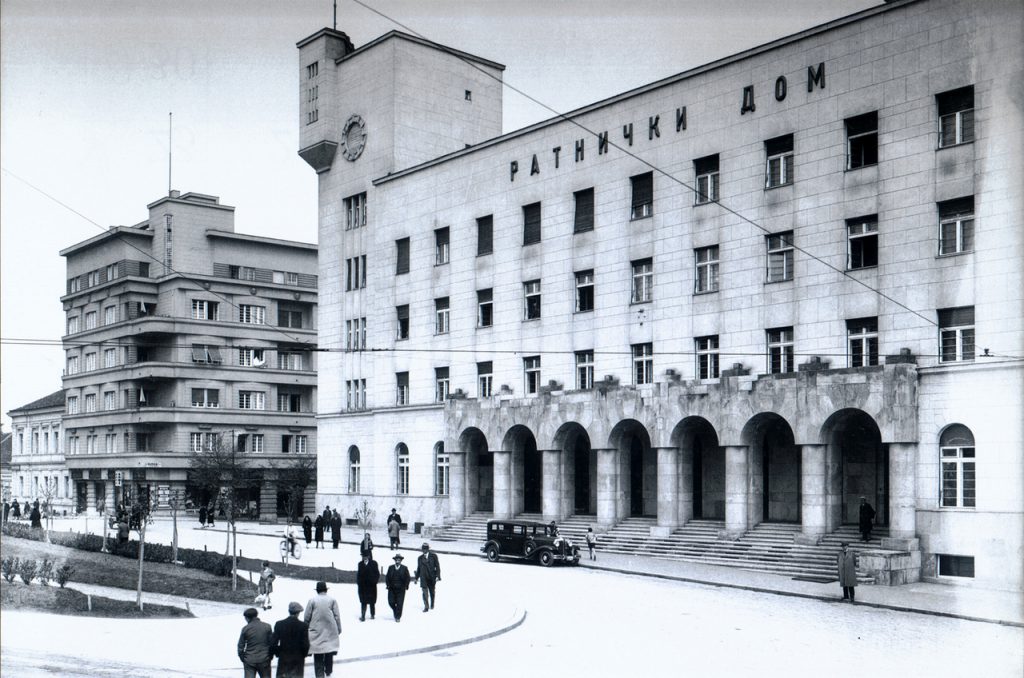BALKANFILA XIX takes place in the building of the Military Club of Serbia, a building at the city centre, built on a plot of land donated by the Municipality of Belgrade to former soldiers of the liberation wars of 1912 – 1918. The building was built in the spirit of modern architecture with elements of expressionism of the forties of the twentieth century, and according to the project of the professors and architects Jovan Jovanović and Živko Piperski. Originally called “Warrior House “, this building, whose construction began in 1929 and was completed in 1931, was built with personal contributions from the Association of Reserve Officers and Soldiers of the Kingdom of Serbia between the two world wars.
The building was built with a foundation in the shape of the Cyrillic letter P, on which the tower with a clock on the corner of Francuska and Braća Jugović streets stands out. The building got its present appearance, a square base, in 1939, when it was extended towards Simina street, by closing the plateau.

During the Second World War, the Warrior House became the headquarters of the Gestapo command for the southern Balkans, and after the liberation of Belgrade, on the first anniversary of Victory over Fascism, on 9 May, 1946, it officially became the Military Club of Yugoslavia, later the Club of the JNA.
The first commander and head of the Club was the famous professor, war colonel, academic painter and graphic artist Branko Šotra.
By decision of the Belgrade City Assembly, the building was declared a cultural asset in 1984. In 2010, the Military Club of Serbia became the headquarters of the Media Centres “Defense” and the Artistic Ensemble of the Serbian Army “Stanislav Binički”.

In the building itself, there is also the Gallery of the Military Club of Serbia, which inherits a valuable art collection with over 1,500 works by the most important artists from the area of Yugoslavia. The collection includes several significant works created in the first half of the 20th century, such as the works of Vlaho Bukovac, Ljubo Ivanović, Sava Šumanović, then Milo Milunović, Ljubo Babić, Kosta Hakman, Jovan Bijelić.
However, the largest part of the collection consists of works by Serbian and Yugoslav artists created in the second half of the 20th century, starting with Petar Lubarda, Zora Petrović, Milan Konjović, Krsta Hegedušić, Marko Čelebonović, Nikola Martinoski, Mića Popović, Ljubica Cuca Sokić, Sreten Stojanović and other greats of Yugoslav art.
This year, the Gallery celebrates an important anniversary – 70 years of existence.
House of the Army, Francuska 2, Belgrade
